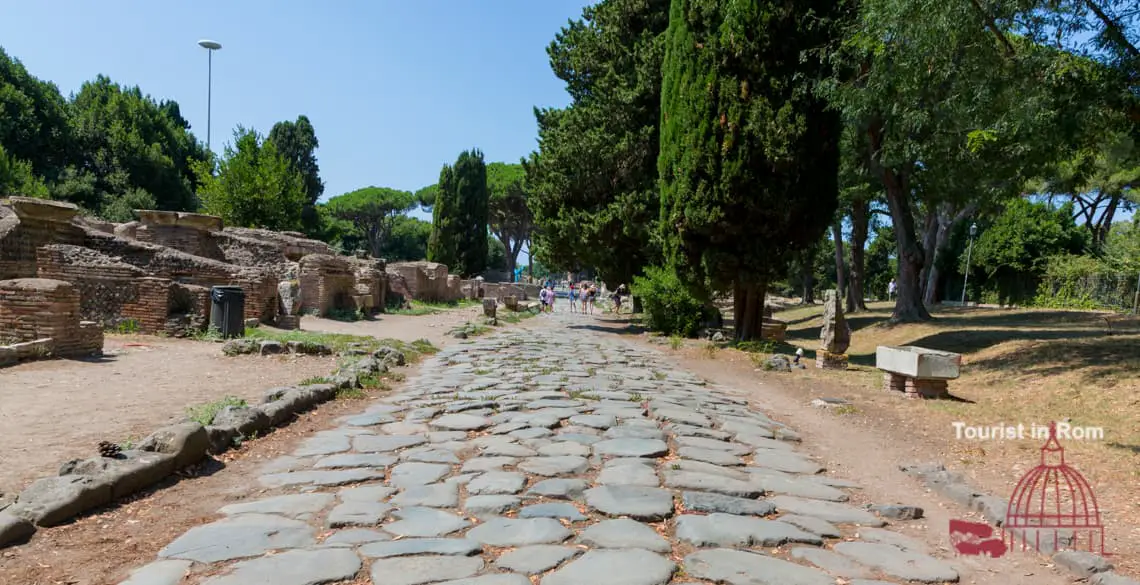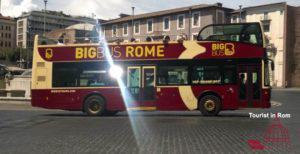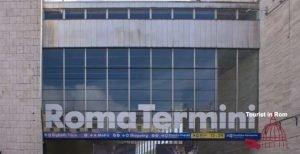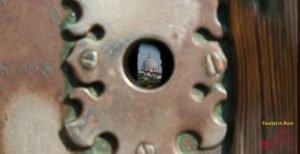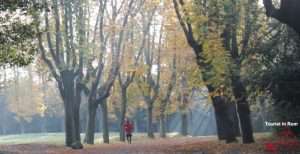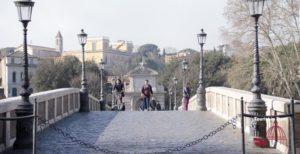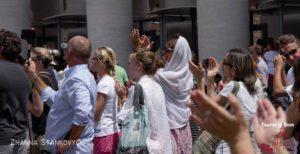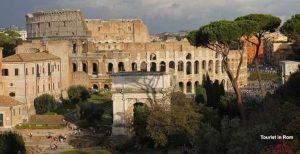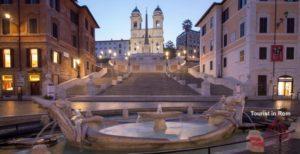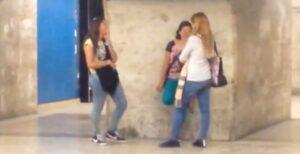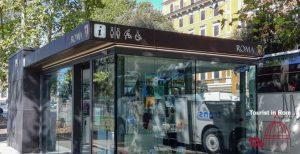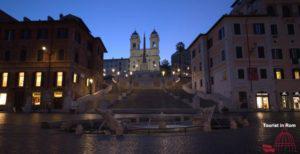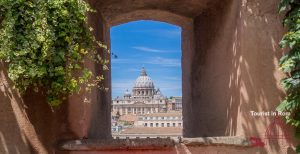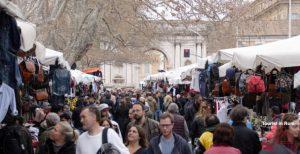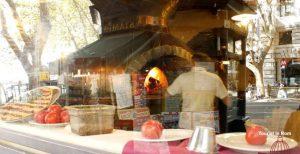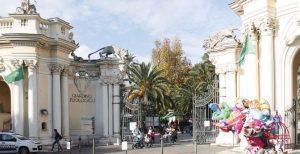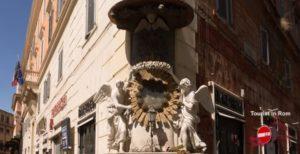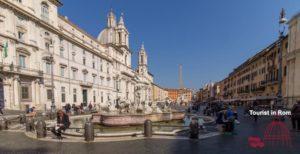Ostia Antica was the first port of ancient Rome. Travel back 2,000 years to the hustle and bustle of this important trading city.
Ostia Antica is a breathtaking archaeological site located just 20 minutes from Rome. The ruins of this once thriving port city immerse visitors in the reality of life at the time, with homes, sports facilities, trading places and a theater.
Although the excavations of Pompeii are far larger and more extensive, the excavations of Ostia Antica are a great alternative to save time and money. After exploring, you have the opportunity to spend some relaxing hours by the sea. Enjoy a visit to the beach and a delicious meal in the modern Roman suburb of Ostia Lido.
Entrance fee
Admission to the Ostia Antica Archaeological Park costs €18 (regular price) and €2 (reduced price). The ticket is valid for a period of 8 days and allows you to visit all the sites and museums in the park. In addition to the excavations, this includes the Castello di Giulio II. In Fiumicino, it includes the ship museum at the airport, the imperial ports of Claudius and Trajan and the necropolis of Porto. Tickets are available at the museum ticket office or online in advance. Reservations are not required.
The archaeological park of Ostia Antica is a national museum with the corresponding rules for admission:
- Free admission for anyone under the age of 18 and for people with disabilities and one companion
- Free admission on the first Sunday of the month
- Reduced admission for EU citizens under 25.
Opening hours
The excavations are closed on Mondays and on December 25th. The opening times are mainly based on the length of the day:
From the beginning of winter time to end of February: 8:30 am – 4:30 pm
March:
8:30 a.m. – 5:15 p.m.
April – September: 8:30 a.m. – 7 p.m.
October 1st – end of summer time 8:30 am – 6:30 pm
The entrance closes 1 hour before.
How to get there
While in ancient times Ostia was located directly by the sea on one of the estuaries of the Tiber, today it is around 5 km from the sea.
The entrance to the excavations is located in Viale dei Romagnoli 717 ![]()
The connection with the local train from the Pyramid, Roma Porta San Paolo station, to the Ostia Antica stop works well. As a pedestrian bridge connects the station with the excavations, the train connection is not suitable for people with walking difficulties.
By car, take Via del Mare and a few kilometers after the Dragona underpass, turn right at the first traffic light and then left in the Ostia Antica district to the parking lot of the excavations.
From Rome Fiumicino Airport, take the bus from Terminal 1 to Ostia Lido and from there the local Metromare train or a bus connection. The journey takes a good hour. The bus from the airport to Lido di Ostia runs 1-2 times an hour.
By car, drive from the airport in the direction of Ostia and then take Via del Mare in the direction of Rome. At the first set of traffic lights, turn right and cross Via del Mare in a kind of traffic circle to enter Ostia Antica and then turn left to the excavations. The journey takes around 20 minutes.
In the direction of Fiumicino, the bus to the airport stops on Via Guido Calza and the journey takes around 40 minutes, including the walk. There are 1-2 connections per hour. There is no luggage storage at the excavations.
The cab center of Lido di Ostia has the phone +390656010646
From Rome Ciampino Airport, take the 720 bus to the Laurentina Metro B terminus and get off at the EUR Magliana stop. There you change to the local Metromare train to Lido di Ostia and travel to Ostia Antica. Including the walk, the journey takes 1 1/2 to 2 hours.
By car, take the GRA ring road in the direction of Fiumicino as far as Via del Mare and continue in the direction of Ostia as far as the Ostia Antica traffic lights. Depending on traffic, the journey can take up to an hour.
History
Shortly after Rome was founded, a Roman colony was established in the 7th century BC at the mouth of the Tiber, which was used to extract salt from the prehistoric salt pans.

In the 4th century BC, a fortified military camp, Castrum, was built around which the city developed. During the imperial period, Ostia rose to become a rich trading city with 50,000 inhabitants, which served to supply the capital with grain.
Emperor Claudius, who ruled until the year 56, had a new and safer port built for shipping at the northern mouth of the Tiber in what was then Portus, the remains of which lie on the edge of today’s Fiumicino.
He was followed by Emperor Trajan with the construction of a hexagonal harbor from which a canal led to Rome. Barges were pulled through the canal to Rome and unloaded at Testaccio. They then returned on the Tiber towards the sea. The canal was also used to divert flood water and thus better protect the city of Rome.
With the construction of the new harbors, Ostia lost importance and was finally abandoned in the 9th century. Excavations began in the 19th century and brought to light one of the largest archaeological sites in the world, covering around 150 hectares.
Highlights of Ostia Antica
The castrum: Built in the 4th century BC, it is the oldest documented part of the excavations. Like all Roman castra, it is divided into four parts by a road running east-west, Decumano, and a road running north-south, Cardo. The protective tuff walls, which contained four gates, are still clearly visible today. The central square of the castrum is the forum, where the two streets intersect.
The forum: It was the center of political, economic and religious life. Temples, stores and public buildings were located here.
The houses: The well-preserved houses with their mosaic floors and frescoes are particularly impressive. They provide an insight into the daily life of the inhabitants of the time.
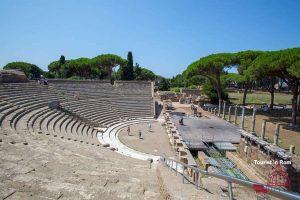
The thermal baths: There were numerous thermal baths in Ostia. They are vivid examples of Roman bathing culture with hot and cold water pools and saunas.
The theater: The well-preserved amphitheater is still used today for concerts and events. Concerts on warm summer evenings enchant visitors with their magical atmosphere.
Visitor tips
Allow plenty of time: The site is quite extensive and you will need 2 – 3 hours to visit the most important areas.

There are two themed trails and a museum in the park. The Sport and Athletes in Ostia Antica trail leads through thermal baths and sports facilities. The other circular route, Places of Grain and Bread, shows the places of processing from loading and unloading, weighing and measuring, storing, milling to the trading centers.
Comfortable shoes and water: As you will be walking around a lot, comfortable shoes are a must. You should also always have enough water with you, especially on hot days.
Guided tour or audio guide: To better understand the history and significance of the various ruins, guided tours or audio guides are very helpful.
See the sea: From Ostia Antica, it’s not far to the sea. Read our tips for a trip to Lido di Ostia.
